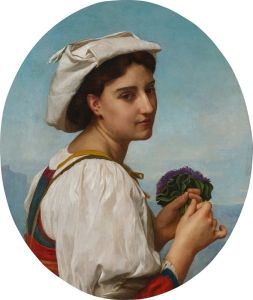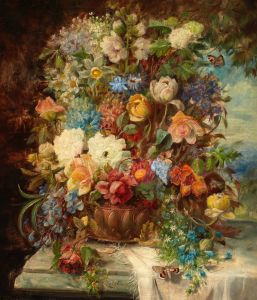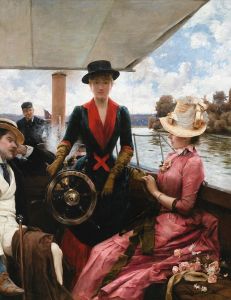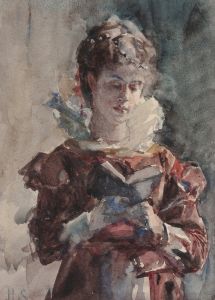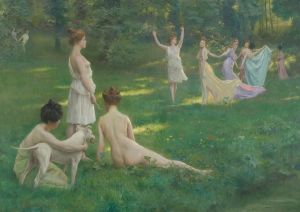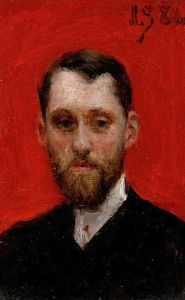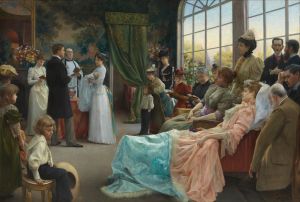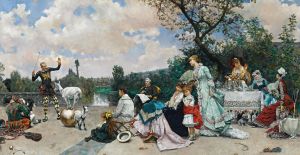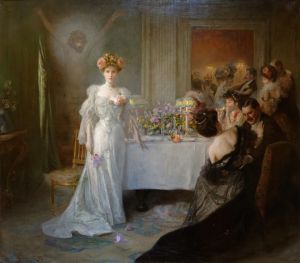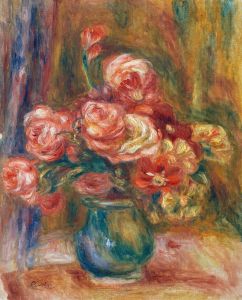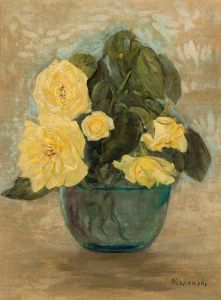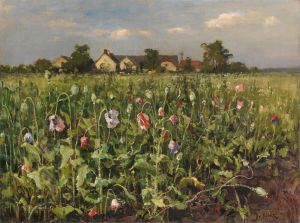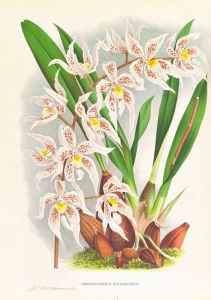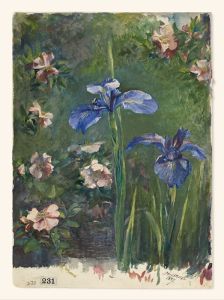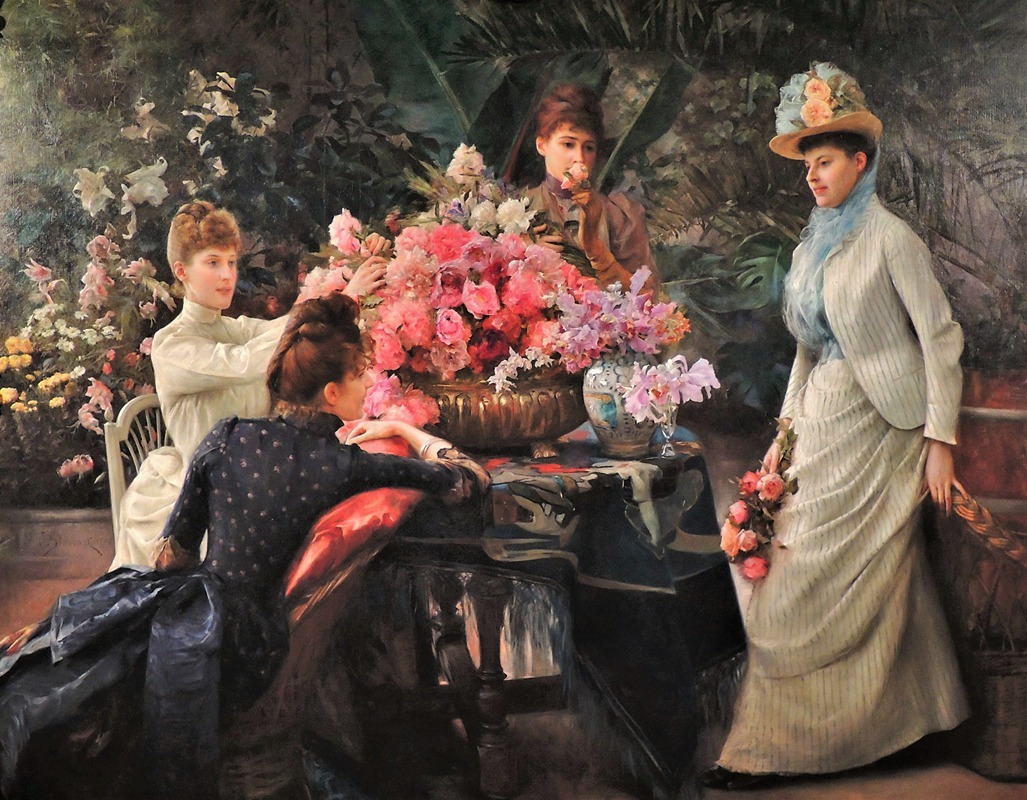
Spring Flowers
A hand-painted replica of Julius Leblanc Stewart’s masterpiece Spring Flowers, meticulously crafted by professional artists to capture the true essence of the original. Each piece is created with museum-quality canvas and rare mineral pigments, carefully painted by experienced artists with delicate brushstrokes and rich, layered colors to perfectly recreate the texture of the original artwork. Unlike machine-printed reproductions, this hand-painted version brings the painting to life, infused with the artist’s emotions and skill in every stroke. Whether for personal collection or home decoration, it instantly elevates the artistic atmosphere of any space.
Julius LeBlanc Stewart (1855-1919) was an American artist known for his luxurious and detailed paintings, often depicting the social elite of his time. One of his notable works is "Spring Flowers," a painting that exemplifies his skill in capturing the elegance and opulence of late 19th-century society.
"Spring Flowers" is an oil painting that showcases Stewart's mastery in rendering textures, light, and the human form. The painting features a group of women in a lush garden setting, surrounded by blooming flowers that signify the arrival of spring. The women are dressed in fashionable attire of the period, highlighting Stewart's attention to detail in clothing and fabric. The composition is carefully arranged to draw the viewer's eye across the scene, emphasizing the beauty and grace of the subjects.
Stewart's use of light in "Spring Flowers" is particularly noteworthy. He employs natural light to create a sense of depth and realism, illuminating the flowers and the women's faces with a soft, warm glow. This technique not only enhances the overall aesthetic of the painting but also adds a layer of intimacy and immediacy, making the viewer feel as though they are part of the serene garden scene.
The painting reflects the influence of French Impressionism, which Stewart encountered during his time in Paris. He studied under the renowned academic painter Jean-Léon Gérôme and was also influenced by the works of Édouard Manet and James McNeill Whistler. This blend of academic training and Impressionist inspiration is evident in "Spring Flowers," where precise draftsmanship meets a more relaxed, light-infused approach to color and composition.
"Spring Flowers" is a testament to Stewart's ability to capture the leisurely and refined lifestyle of the upper class. The painting not only serves as a beautiful representation of a specific moment in time but also offers insight into the social dynamics and cultural values of the era. Stewart's work often featured themes of leisure and luxury, and "Spring Flowers" is no exception, portraying an idyllic and harmonious scene that invites viewers to appreciate the simple pleasures of life.
Julius LeBlanc Stewart's "Spring Flowers" remains a celebrated piece within his oeuvre, admired for its technical excellence and its evocative portrayal of a bygone era. The painting continues to be appreciated by art enthusiasts and historians alike, serving as a window into the past and a reminder of the enduring beauty of nature and human connection.





